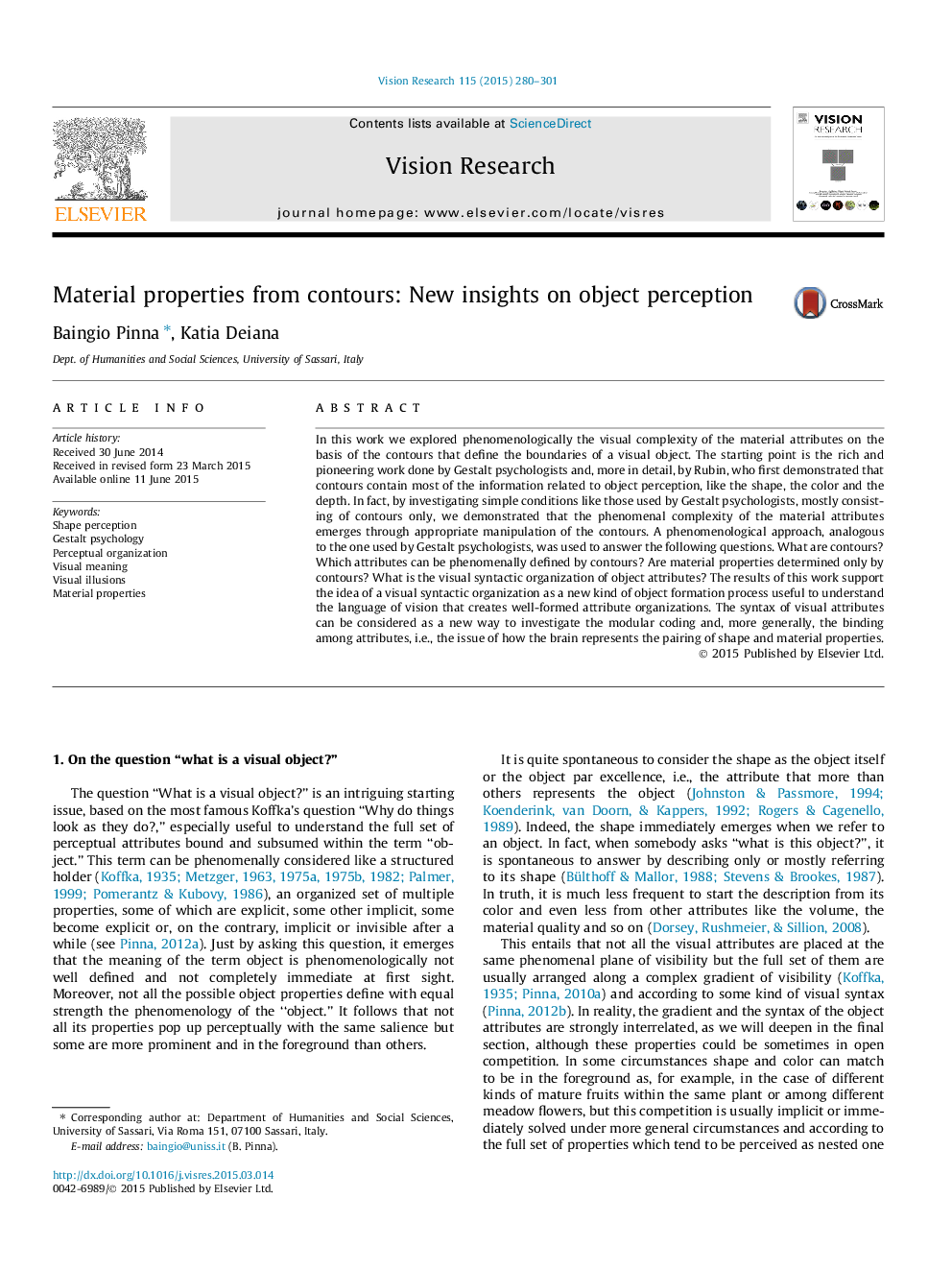| Article ID | Journal | Published Year | Pages | File Type |
|---|---|---|---|---|
| 6203118 | Vision Research | 2015 | 22 Pages |
â¢Material attributes depend on the boundary contours that define a visual object.â¢Materials depend on global/local changes and absences within the shape.â¢Shape and material attributes elicit the perception of causality.â¢The results support the idea of a syntactic organization between shape and material.
In this work we explored phenomenologically the visual complexity of the material attributes on the basis of the contours that define the boundaries of a visual object. The starting point is the rich and pioneering work done by Gestalt psychologists and, more in detail, by Rubin, who first demonstrated that contours contain most of the information related to object perception, like the shape, the color and the depth. In fact, by investigating simple conditions like those used by Gestalt psychologists, mostly consisting of contours only, we demonstrated that the phenomenal complexity of the material attributes emerges through appropriate manipulation of the contours. A phenomenological approach, analogous to the one used by Gestalt psychologists, was used to answer the following questions. What are contours? Which attributes can be phenomenally defined by contours? Are material properties determined only by contours? What is the visual syntactic organization of object attributes? The results of this work support the idea of a visual syntactic organization as a new kind of object formation process useful to understand the language of vision that creates well-formed attribute organizations. The syntax of visual attributes can be considered as a new way to investigate the modular coding and, more generally, the binding among attributes, i.e., the issue of how the brain represents the pairing of shape and material properties.
